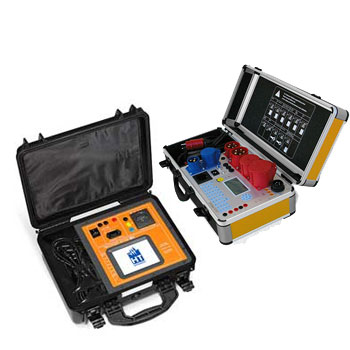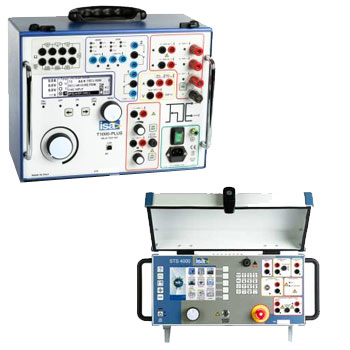- Simultaneous measurement of the surface temperature and air temperature
- Non-contact measurement of the surface temperature (infrared thermometer)
- Display of the temperature difference
- Adjustable emission level
 Datasheet Datasheet |
An infrared temperature measuring transducer with contactless IR-probes and universal standard outputs for combination with temperature regulators, indicators and PLC-systems.
- Convertible multirange from-40° C to +1000° C Specialrange as counting instrument
- International standard outputsRelaiscontact for high-/low temperature limitsAdjustable response time
- Power Supply:230 VAC, 50/60 cycl. or 24 VDC
- Trigger input : 24 VDCfor temperature-hold-function
- Separate plug-in sensorsfor different distance / targets
- Integrated air cooling and purging system
- Sensor cable extension up to 40 meters
- 100% optimum adjustable by hand
- Unit in aluminium housingor as build-in circuit board
 Datasheet Datasheet |
- Laser marking
- 10:1 optics and high resolution processor for accurate measurement results
- Precision with 0.1 °C resolution
- Easy to use thanks to the gun-style design
- Adjustable emissivity
- Hold function (to retain a reading)
 Datasheet Datasheet
|
 User Manual User Manual
|
- Laser marking
- 12:1 optics and high resolution processor for accurate measurement results
- Precision with 0.1 °C resolution
- Easy to use thanks to the gun-style design
- Adjustable emissivity
- Hold function (to retain a reading)
 Datasheet Datasheet
|
 User Manual User Manual
|
- Laser marking
- Accurate results thanks to its 30:1 optics and high resolution processor
- Precision with 0.1 °C resolution
- Easy to use thanks to the gun-style design
- Adjustable emissivity
- Hold function (to retain a reading)
 Datasheet Datasheet
|
 User Manual User Manual
|
- Non-contact, non-invasive temperature measurements due to IR technology
- Precise temperature measurements also of smaller products and from a distance
- Ultra-fast: two measurements per second – allows you to scan whole pallets in the blink of an eye
- Includes 2-point laser measuring spot marking, 30:1 optics, belt clip, batteries
 Datasheet Datasheet |
- Reliable IR measurement up to 600 °C
- IR measurements from a safe distance
- Memory for up to 200 readings; easy analysis with free-to-download software
- 4-point-laser and 50:1 optics for precise measurements over greater distances
 Datasheet Datasheet
|
 User Manual User Manual
|
 User Manual User Manual
|
 User Manual User Manual
|
- Extended temperature range for reliable measurements up to 2,732 °F
- IR measurements from a safe distance; precise measuring of moving objects
- Memory of up to 200 readings; easy analysis with free to download software
- 4-point laser and 50:1 optics for precise measurements over greater distances
 Datasheet Datasheet
|
 User Manual User Manual
|
 User Manual User Manual
|
 User Manual User Manual
|
- Measures temperature / moisture / dew point
- Calculates surface moisture content
- Easy to follow menu guide, memory of up to 200 readings, data analysis with free to download software
- 4-point laser and 50:1 optics for precise measurements, even over long distances
 Datasheet Datasheet
|
 User Manual User Manual
|
 User Manual User Manual
|
 User Manual User Manual
|
Infrared probe for no-contact temperature measurement, compatible with any multimeter equipped with a mV range.
 Datasheet Datasheet
|
 User Manual User Manual
|
- Compact and rugged due to its 3-metre fall resistance
- IP65 ingress protection
- Excellent metrological performance
- Wide dynamic range for measurement:-35 °C to +450 °C
- Configurable high and low alarms
 Datasheet Datasheet
|
 User Manual User Manual
|
- Compact and rugged due to its 3-metre fall resistance
- IP65 ingress protection
- Excellent metrological performance
- Dual LASER sight for precise targeting of the test area
- Wide dynamic range for measurement:-35 °C to +650 °C
- Configurable high and low alarms
 Datasheet Datasheet
|
 User Manual User Manual
|
This no-contact thermometer offers the possibility of adjusting the emissivity for inspections that match reality. To detect hot spots, a simple scan of the target is all it takes (scanner function). Equipped with an extensive temperature range, it also has a high distance/spot targeting ratio. Alarm thresholds can be set to warn of any temperature overruns.
 Datasheet Datasheet
|
 User Manual User Manual
|
This no-contact thermometer offers the possibility of adjusting the emissivity for inspections that match reality. To detect hot spots, a simple scan of the target is all it takes (scanner function). Equipped with an extensive temperature range, it also has a high distance/spot targeting ratio. Alarm thresholds can be set to warn of any temperature overruns.
 Datasheet Datasheet
|
 User Manual User Manual
|
In its compact, shockproof casing, the Physics Line C.A 876 Digital Thermometer is equipped with a built-in infrared probe and a K-thermocouple input.
 Datasheet Datasheet
|
 User Manual User Manual
|
Comfortable and extremely practical system for reading temperature with laser system as well as provide sound and visual indications whenever the measured value changes. It was designed for those who want to carry out very fast measurements and detect temperature variations without wasting time.
 Datasheet Datasheet
|
 User Manual User Manual
|
- Infrarot Temperatur-Messbereich: -30 °C ÷ 500 °C
- Sichtfeld (Optik): 12:1
- Laserpointer
- Emissionsgrad einstellbar
- Integrierte weiße LED
- Integrierte blaue LED mit UV Funktion
- Display mit Hintergrundbeleuchtung
- MAX/MIN/DIFF/AVG
- Alarmgrenzwert MAX und MIN mit Summer
- Data Hold
 Datenblatt Datenblatt
|
 Bedienungsanleitung Bedienungsanleitung
|
Comfortable and extremely practical instrument to read infrared temperature with laser system providing visual and sound indications every time the measured value changes. HT3305 also allows to perform temperature measurements with a type K probe, it is designed for those who need to perform very fast measurements and to detect, without loss of time, temperature variations
 Datasheet Datasheet
|
 User Manual User Manual
|

IR Temperature Instruments – contactless, fast & safe
IR temperature instruments (infrared thermometers/pyrometers) measure surface temperatures without contact and in real time—ideal for moving, hard-to-reach or very hot objects. Typical applications: maintenance/service, HVAC/facilities, food/HACCP, process/production, electrical systems and safety.
Depending on the model you get adjustable emissivity (ε), various optics (D:S/spot size), laser aiming (single/twin/circle), Min/Max/Hold, alarms, logging and interfaces (USB/Bluetooth/Modbus) for documentation and integration.
ICS Schneider Messtechnik supports instrument selection, ε setup, blackbody calibration and integration into QA/IIoT environments.
FAQ on IR Temperature Instruments
Answers on principles, emissivity, D:S/spot size, optics, accuracy/response, calibration, documentation and practical use.
Where do IR thermometers work best?
On hot or moving surfaces, electrical components, rollers/pipes, food surfaces, near furnaces/exhausts, and in places you cannot touch without stopping the process.
How does IR measurement work—and why does emissivity (ε) matter?
The instrument senses thermal radiation emitted by the surface. Emissivity describes how efficiently the material emits radiation. A wrong ε creates systematic errors—set ε to match the material or create a matte reference.
What does D:S mean and how big is the spot?
D:S is the ratio of distance (D) to spot diameter (S). The measurement spot must be smaller than the target; otherwise surrounding areas will bias the reading.
Which optics/aiming options exist?
Standard single-point laser, twin-laser (marks spot edges), circle laser (shows full spot), plus telephoto/wide optics to match working distance and target size.
Accuracy & response time—what should I expect?
Typically ±1…2 K or ±1 % of reading (model-dependent). Response times are often < 250 ms. Key influences: ε setting, D:S, ambient conditions (steam/dust), gloss/reflections and focus.
How do I measure shiny/reflective surfaces?
Reduce reflections: apply a matte black patch/tape as a reference, adjust ε accordingly, change viewing angle, or complement with a contact probe.
Emissivity reference values (rules of thumb)
| Material | ε (typ.) | Note |
|---|---|---|
| Food/organic | 0.90–0.98 | usually matte, stable |
| Painted/oxidized metals | 0.80–0.95 | generally easy |
| Bare, polished metal | 0.05–0.30 | critical → matte the spot |
| Plastics | 0.85–0.95 | wavelength-dependent |
How do I choose the right temperature range?
Select a range that covers your process with a safety margin. For very high temperatures consider spectrally selective pyrometers.
IR vs. contact measurement—when to use which?
IR is fast and non-contact but depends on surface properties. Contact is slower yet can be traceably more accurate with proper coupling. Many workflows use both.
Which environmental factors affect readings?
Steam, dust, smoke attenuate/scatter radiation; viewing windows must suit the instrument’s spectral band. Minimize air turbulence where possible.
How do I calibrate/verify an IR thermometer?
Use a blackbody source across the relevant range; set ε and distance/focus, wait for stability, then document the results.
How do I set emissivity correctly?
Create a reference (e.g., matte sticker/paint or a parallel contact probe), then adjust ε until the IR reading matches the reference.
Choosing the right D:S for your task
| Optic | D:S (typ.) | Use case |
|---|---|---|
| Standard | 12:1 … 20:1 | everyday, mid distance |
| Telephoto | 30:1 … 50:1 | small targets, long distance |
| Macro/close-up | 2:1 … 8:1 | very small targets up close |
How do I document for QA/HACCP?
Use instruments with logging, time stamps, alarms and export (CSV/PDF); reference users/batches and define limits.
What interfaces/integrations are available?
USB/Bluetooth for apps/PC; often analog/RS-485/Modbus for PLC/SCADA/cloud integration (via gateways).
Food/HACCP—what should I consider?
IR measures the surface only. For core-temperature requirements (e.g., doneness), use a penetration probe. Check for sheen/moisture and adjust ε.
Is medical use allowed?
Standard industrial IR devices are not approved for medical diagnostics. For human screening, use certified devices and procedures.
Maintenance & lens care
Clean lens/windows with a lint-free cloth; avoid abrasives. Use protective caps, avoid shocks/vibration, and store dry.
Common pitfalls & quick fixes
- Spot larger than target → move closer / use higher D:S optics
- Wrong ε → adjust ε, add a matte reference
- Reflections → change angle, matte the surface
- Steam/dust path → shorten/clean the path, use a protection window
Do you help with selection, calibration & integration?
Yes. We define optics/D:S and ε concepts, provide calibration certificates, integrate with QA/SCADA/cloud and train your team.





























































































































































































